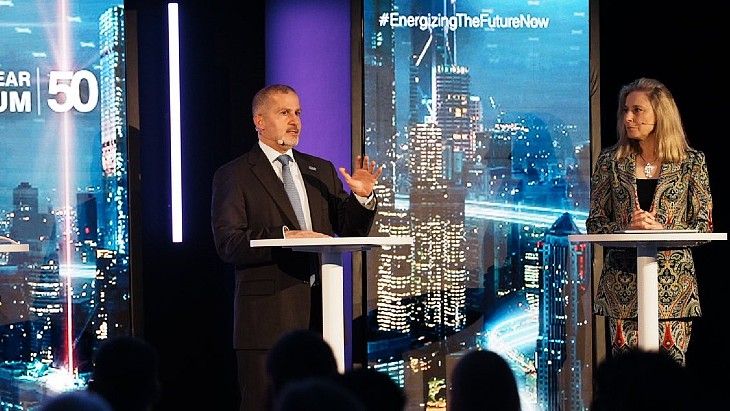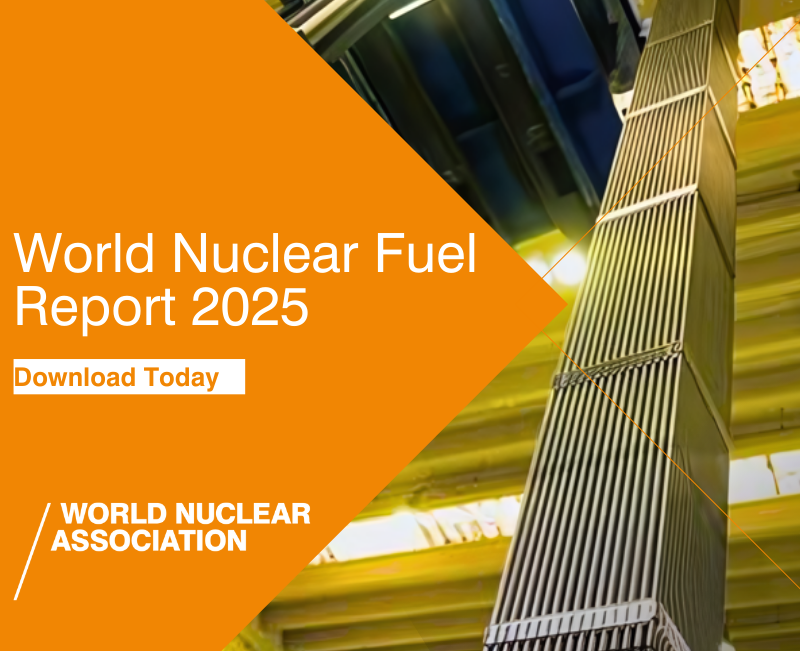Both small modular reactors (SMRs) and potential large reactor projects will be considered in the siting work. The trio has applied for US Department of Energy grant to begin the preliminary search for a potential site under the Generation III+ Small Modular Reactor programme, an initiative announced last year to provide to USD900 million to support SMR deployment support. If approved, the grant would support a three-year site selection process and possible preparation of an early site permit application to the US Nuclear Regulatory Commission.
The utilities said they have been "monitoring emerging nuclear technologies and have a shared interest in evaluating their potential" to support Arizona's growing energy needs.
"Energy demand in Arizona is increasing rapidly," Arizona Public Service President Ted Geisler said. "To ensure a reliable and affordable electric supply for our customers, we are committed to maintaining a diverse energy mix. While new nuclear generation would take more than a decade to develop, the planning and exploration of options must begin now."
Salt River Project (SRP) is a community-based, not-for-profit public power utility and the largest provider of electricity in the greater Phoenix metropolitan area, with more than 1 million customers. It generates electricity using solar, geothermal, biomass, wind and hydropower as well as coal and gas, and it also owns a 17.5% interest in Palo Verde. General Manager and CEO Jim Pratt said SRP was "exploring all options" to meet the area's growing energy needs affordably, reliably and sustainably. “We appreciate the collaboration with our neighbouring utilities to help determine the role new nuclear generation could play in powering Arizona’s future," he said.
New nuclear generation could provide Arizona with reliable, around-the-clock carbon-free energy to power economic growth, said Susan Gray, president and CEO of Tucson Electric Power. The utility serves more than 450,000 electric customers in Southern Arizona from an energy mix that currently includes wind and solar, coal and natural gas, but has said it is aiming to reach net-zero greenhouse gas emissions by 2050. "We know the development timeline would be long, so it makes sense for our state’s energy providers to begin this preliminary evaluation as soon as possible," she added.
According to the US Nuclear Energy Institute, the three-unit Palo Verde nuclear power plant provides 27% of Arizona's electricity and some 61% of the state's carbon-free generation. Nearly half - 45.5% - of the state's electricity comes from coal, with 10.4% from coal plants and 10.2% from solar.
The DOE opened applications for funding to support the initial domestic deployment of Generation III+ small modular reactor technologies last October, with up to USD800 million to go to two "first-mover" teams and USD100 million to address so-called gaps that have hindered plant deployments. A coalition led by the Tennessee Valley Authority has also announced that it is seeking funding from the programme, with subsidiaries of American Electric Power also seeking funding for siting work in Indiana and Virginia.

_40653.jpg)



_33584.jpg)
_82983.jpg)
_49382.jpg)
_34792.jpg)





